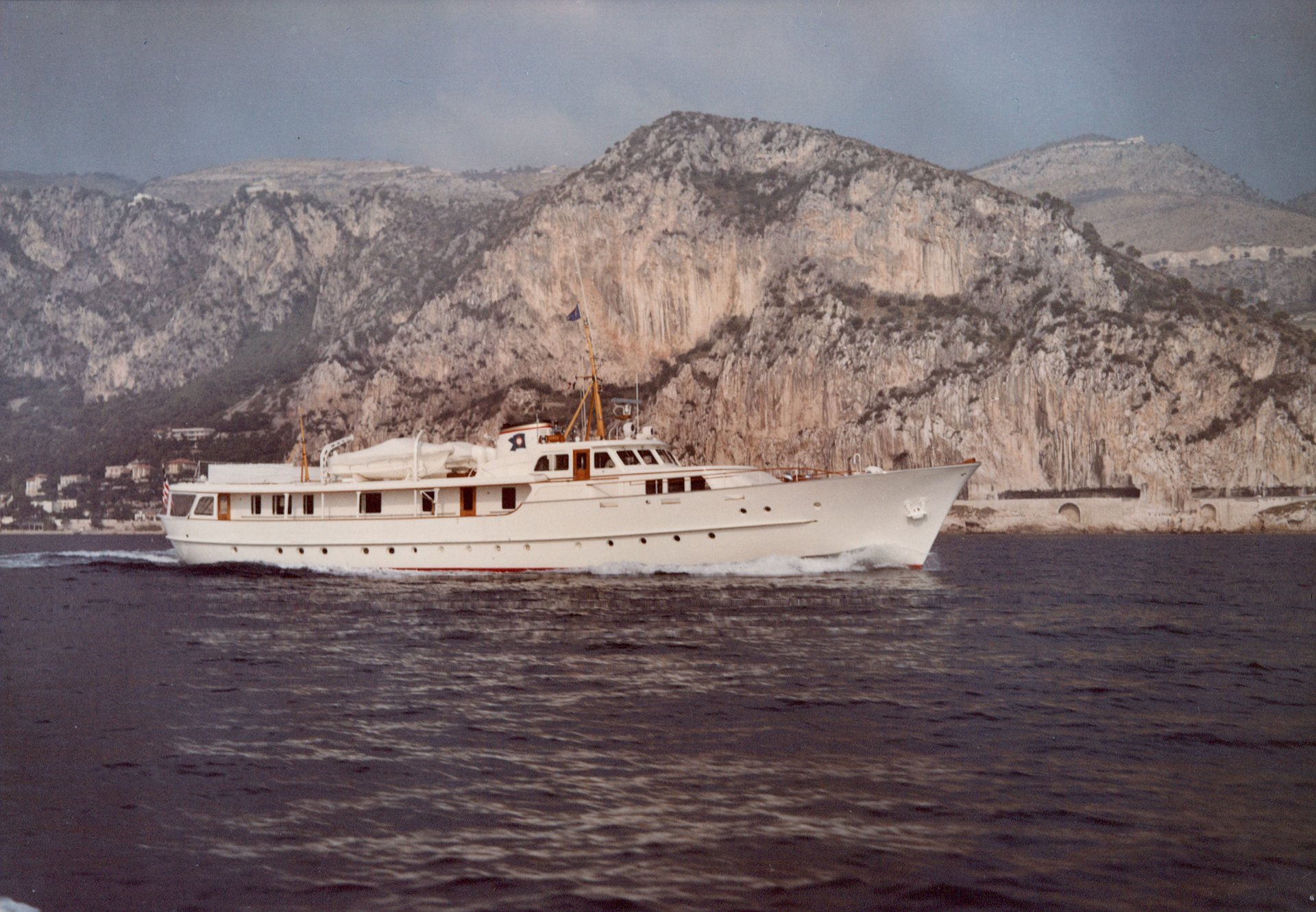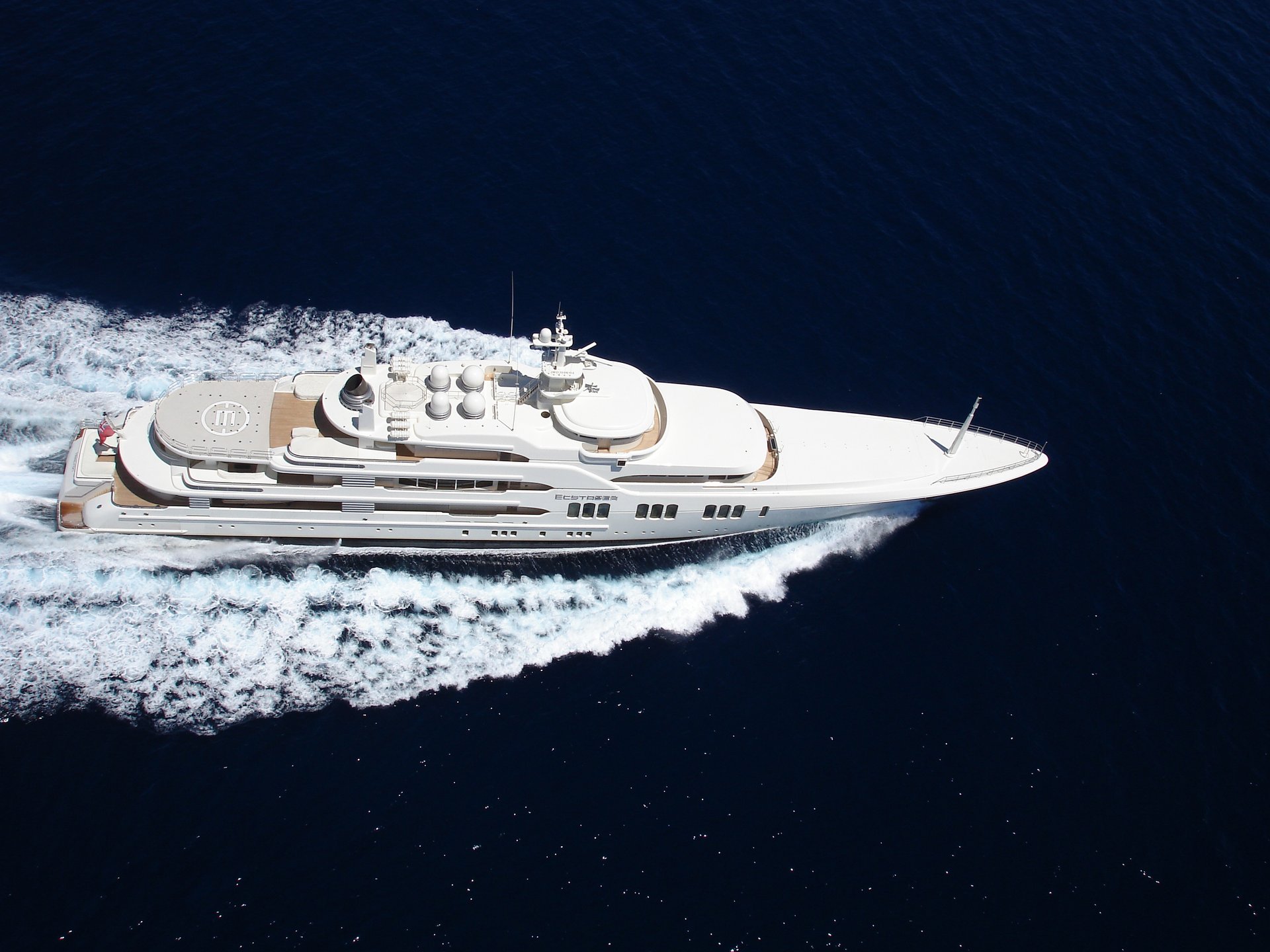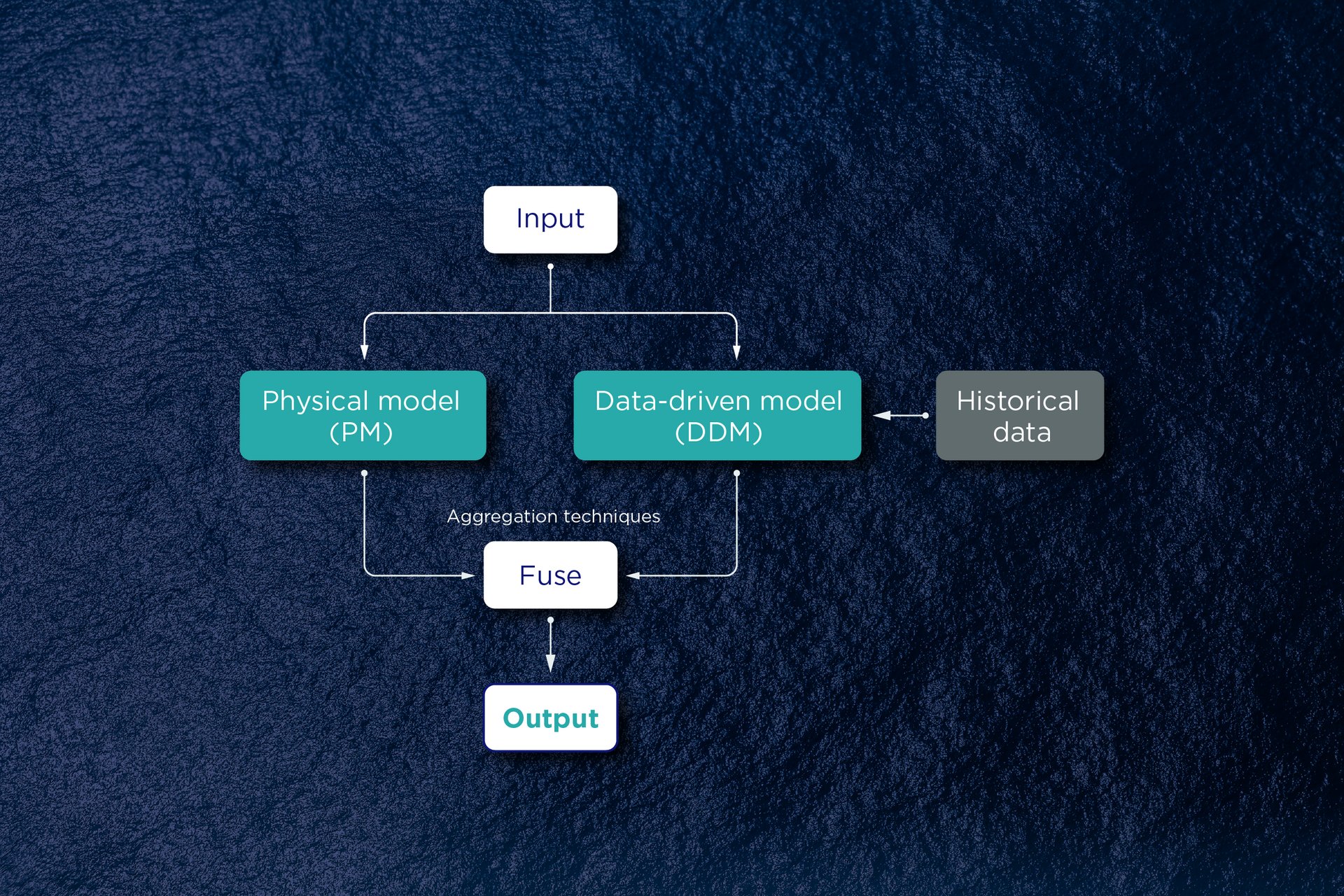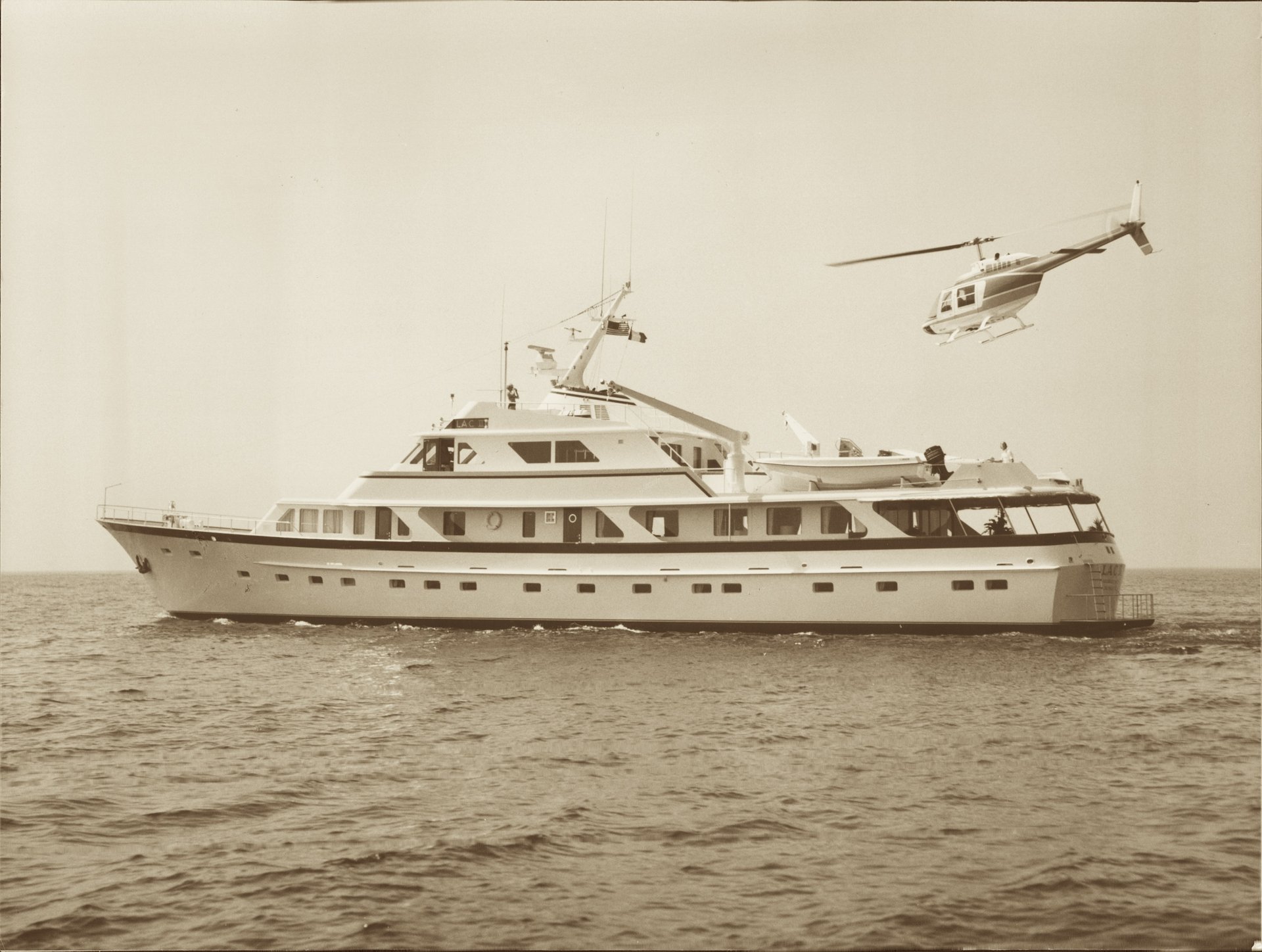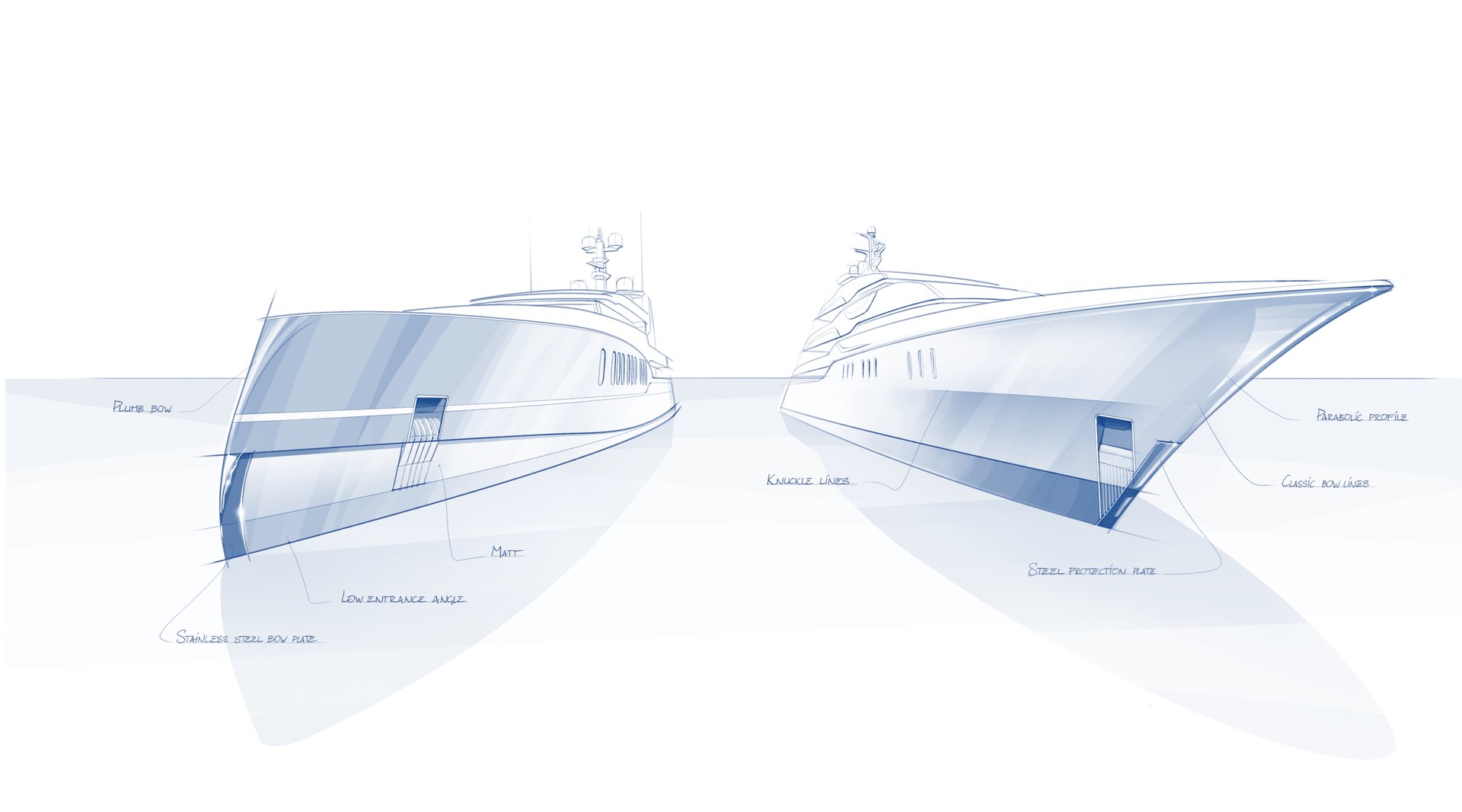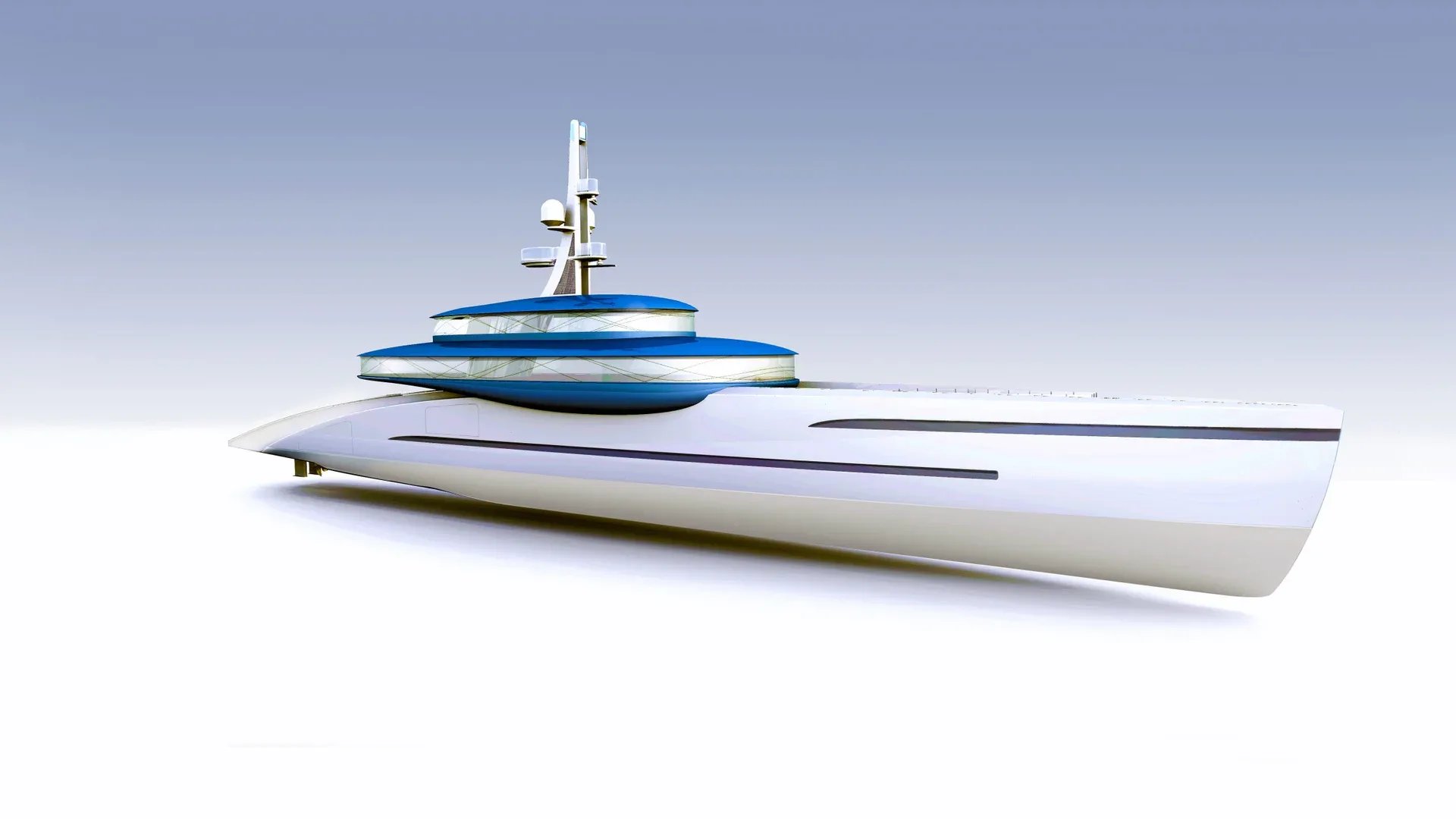The history of luxury motoryachts can be divided into two distinct eras – Before Camargo (BC) and After Camargo (AC) – such was the influence of Feadship’s Camargo IV on the global yachting industry. Launched in 1961, Camargo IV brought alternating current to the water and, properly electrified, completely revolutionised the yachting industry. Today, the most innovative boat of her day is still turning heads.
Epic tales
All Feadships benefit from the synergy between ongoing innovation within the organisation and the wider technical options as and when they become available. The third party in this trinity of progress is undoubtedly the drive and ingenuity of those owners who are committed to pushing the windows of change in a myriad of ways. So let us pay tribute to Julius Fleischmann Jr who by demanding airco, ice cubes and an enormous deal more besides established a Plimsoll line against which superyachts would be judged for many years to come. Fleischmann was the third generation of a family that moved to the US from Hungary in the 1800s and made their fortune by revolutionising the way yeast was used in baking. Famously philanthropic, he was also a great lover of sailing. From 1928 to 1933 Fleischmann and his young family explored the world on Camargo I, an epic voyage that saw him compile a quite remarkable collection of global artefacts. These were featured in an exhibition held several years ago in Cincinnati: google ‘junkie's big adventure’ and you’ll be amazed.
In the know
As the name implies, Camargo IV was the fourth custom build for a man who, almost three decades on, knew what he wanted. In coming to Feadship, Fleischmann was determined to pour his decades of experience spent on the water into this swansong project. He knew that people didn’t like to miss their favourite sport games so had four televisions fitted, including one for the eight-man crew. This might not sound a big deal to our 21st-century TV-saturated ears, but having four TVs on one yacht was considered positively outrageous in 1961. So too was the idea of fitting out all areas of the yacht with an Ampex stereo sound system and, wait for it, a new-fangled ‘tape recorder’. People were astounded at this ingenious technology that allowed programmes to be recorded and piped though the hi-fi when radio stations were out of reach. It’ll never catch on, they said…
Candle-lit dinners
An air of intimate luxury prevailed throughout the interior of Camargo IV, which included exquisite carpets custom-made in Denmark, The Fleischmanns had an aversion to artificial lighting so only had a couple of lamps discreetly hidden in the corners of the lounge and dining room, allowing candles to illuminate their evening gatherings and create the desired ambience. The bathrooms were awash with gold-plating while antique chairs were converted into quirky toilets. Amsterdam and Paris were scoured for rare books, the contents of which were then discarded so the spines could be used to create a sliding panel for the TV screen. Fleischmann loved to reconnoitre the underwater world so Camargo IV became the first Feadship to feature a dedicated diving tank storage. Other technologies making their debut were waste heat evaporators, a watermaker that used steam to convert seawater at a time before reverse osmosis was available, an automatic sprinkler system, and a washing machine and tumble dryer.
Radar and roll
Of even greater importance, perhaps, for the future of yachting was the premiering of the kind of radar and automatic pilot equipment that had only previously been seen on navy vessels. Camargo IV also featured a sophisticated bowthruster, a giant anchor winch and hydraulic steering. A further degree of comfort was added by fitting two retractable stabiliser fins. Gyroscopically controlled and hydraulically driven, they lessened rolling from 15% to 1.5%. With the risk of being tossed out of bed in rough seas so significantly reduced, a large double bed was placed in the owner’s stateroom instead of the traditional, roll-resistant single berths. This being Camargo IV, that double bed was, of course, electrically adjustable.
A thirst for power
All well and good, but how on earth – no, on water – could all this novel gear be supplied with sufficient electricity? The central chilled-water air-conditioning system alone required a lots of energy, never mind all the other power-hungry technologies and equipment. One contemporary newspaper article breathlessly reported that the yacht required the same capacity as a small village to run all its wonders.Regardless of the veracity of this claim, it was clear that a bank of 110-volt batteries would have taken up way too much space and no longer suffice. Feadship therefore agreed to move forward with installing the first AC generators, something that could only have been attempted with a yacht of this size. The small number of shore connections, which only started becoming readily available in the late sixties, were an added challenge, as was the difference between American (110) and European (220) voltage. The latter was solved on subsequent Feadships by adding two alternators although Camargo IV was initially only given a US shore connection as the Fleischmanns did not expect to venture further afield.
Haute cuisine
The switch to generators enhanced safety as well as comfort by bringing an end to the need to use butane gas on board. This breakthrough had a knock-on effect for the galleys on Feadships where modern equipment could be used and haute cuisine served. Camargo IV took full advantage of this, showcasing the first ever microwave oven on a motoryacht, a giant freezer, a coffee machine with its own water connection and a waste compacter. Oh, and let’s not omit the ice-cube maker, which was capable of churning out a phenomenal 2,000 cubes every 24 hours. Cheers!
Quieter times
An innovation in one area of yachtbuilding often necessitates further ingenuity elsewhere, and that certainly held true on Camargo IV. Generators make a great deal of noise compared to batteries, with sound levels matched only by the propellers and engines. Feadship was therefore given the green light by the owner to make the first serious efforts on a super- yacht to tackle noise and vibration at source as well as attenuate any remainder through insulation. Flexible couplings were placed in the engine room, the generators and engines were rubber-mounted, and the engine room sides were clad with sound absorbing material. Exhaust pipes were suspended and the chilled water piping placed in rubber sleeves.
Signature design
As well as being packed with innovations, Camargo IV literally as well as figuratively transformed the way people saw superyachts. The first Feadship to
be solely designed by Frits de Voogt, she established a raised pilothouse look that would become the accepted fashion for the next three decades of large yachts. Other signature exterior elements included a canoe stern and the first inklings of what would later be known as fashion plates. One last thing to remember when looking back at these halcyon days of 1961 is the sheer size of Camargo IV by the standards of her day. The largest Feadship to date was also the largest motoryacht built for anyone in the United States for a full twenty years. The day after her launch, a delighted Julius Fleischmann Jr gave his friend Prince Bernhard, consort of Queen Juliana of the Netherlands, a personal tour on board. The royal visit added to the allure of this exceptional achievement, just one more reason why Camargo IV opened the door to a large number of new orders for Feadship in subsequent years from the well-heeled of society and industry.
